1. Plagiarism/Copyright
1.1. Why is this a problem? What preventative measures can be taken?
1.1.1. Students may consciously or inadvertently share ideas that come from others in order to complete assignments and obtain a good grade. Instructors need to explain what constitutes plagiarism, how to "cite" a source correctly and discipline that may occur if plagiarism or an infringement on copyright is detected. Instructors also need to be careful to use materials in their course that do not cause a copyright infringement and to give credit to these sources.
1.2. Resources Available
1.2.1. Learning Resources: Plagiarism and the Internet
1.2.2. Avoiding Plagiarism
2. Netiquette
2.1. Why is this a problem? What preventative measures can be taken?
2.1.1. Students need to know how to interact online with their peers and instructor in a polite manner. Having students view videos about netiquette and having expectations listed are ways to prevent negative interactions as well as misunderstandings.
2.2. Resources Available
2.2.1. Discussion Board Netiquette
2.2.2. Internet Etiquette: Netiquette Guidelines for the Online Classroom
3. Cyberbullying
3.1. Why is this a problem? What preventative measures can be taken?
3.1.1. Cyberbullying is harassing a person in an online environment. This should not happen in an online course. Prevention would include defining cyberbullying, listing unacceptable examples and listing the consequences if a student were to engage in this behaviour. Clearly explained expectations for how to interact online need to be posted for every student to be aware.
3.2. Resources Available
3.2.1. How to Beat Cyberbullies
4. Completion of Assignments
4.1. Why is this a problem? What preventative measures can be taken?
4.1.1. Students need to complete assignments in order to demonstrate their learning in an online course. Having clear expectations and rubrics is one way to address this. Posting rubrics and giving explicit feedback is key for students to know how to improve. Communication is also key for teachers to encourage students right away or to send reminders when assignments are due.
4.2. Resources Available
4.2.1. Easily create and use rubrics in Brightspace
5. Group Work
5.1. Why is this a problem? What preventative measures can be taken?
5.1.1. Instructors may want to have students complete work in a group instead of individually. Instructors need to clarify the expectations for the assignment, how they will be graded and when/how to contribute to the group work. Being flexible to allow students to work individually is also important.
5.2. Resources Available
5.2.1. https://www.youtube.com/watch?v=x6q0_ZqRIvk&list=PLxHabmZzFY6kuIv1QKJsap5_iBrqztpJ4&index=1
6. Resources Available
6.1. Brightspace Attendance Tracking
7. Management of documents, handouts and student files
7.1. Why is this a problem? What preventative measures can be taken?
7.1.1. It's important to stay organized with student files, documents and course content, so you can a) communicate with students easily b) evaluate/assess their growth c) be accountable as an instructor/marker to explain your grades d) be able to provide the resources needed for your students to succeed e) be efficient with your time, instead of spending time unnecessarily looking for information! Using a clear management system, such as the ones integrated in the Brightspace program, can keep all student info in one place and easily accessible.
7.2. Resources Available
7.2.1. Brightspace Tutorials
7.2.2. Brightspace Tutorials
8. Safety on the Internet
8.1. Why is this a problem? What preventative measures can be taken?
8.1.1. The internet connects to all types of people. Unfortunately, that means there are pages from criminals, as well as pages that are not appropriate for students. There is also a lot of misinformation. So it is important to be safe, and to know how to evaluate pages/websites/information. Knowledge is power, and the instructor can give knowledge to students on how to stay safe. Instructors should also look at the websites and resources that they suggest to students and make sure they are current, reliable and safe sources.
8.2. Resources Available
8.2.1. Media Awareness Network is now MediaSmarts!
8.2.2. Safe Web Surfing: Top Tips for Kids and Teens Online
9. Attendance
9.1. Why is this a problem? What preventative measures can be taken?
9.1.1. Students need to spend time completing assignments in their online courses and sometimes an instructor may require them to attend in "real time". Teaching students how to organize their time and what is required (how many times they need to log on to the course) are ways to prevent problems.
10. Discipline
10.1. Why is this a problem? What preventative measures can be taken?
10.1.1. Helping students become successful in their course will have a positive impact on their life. Self-discipline is key to managing the time needed to devote to an online course, in order to be successful. Instructors should include study skills and strategies into their course to teach students how to succeed.
10.2. Resources Available
10.2.1. Inside the mind of a master procrastinator | Tim Urban
10.2.2. 10 Practical Tips for the Online Student // Online Degrees & Distance Learning

